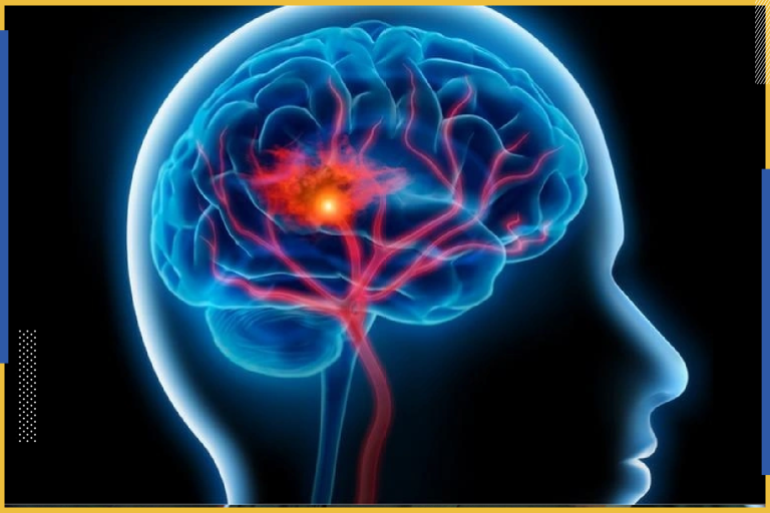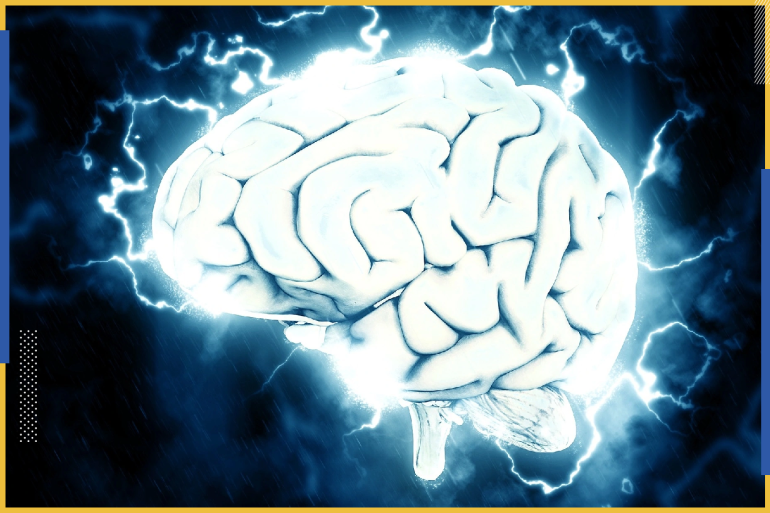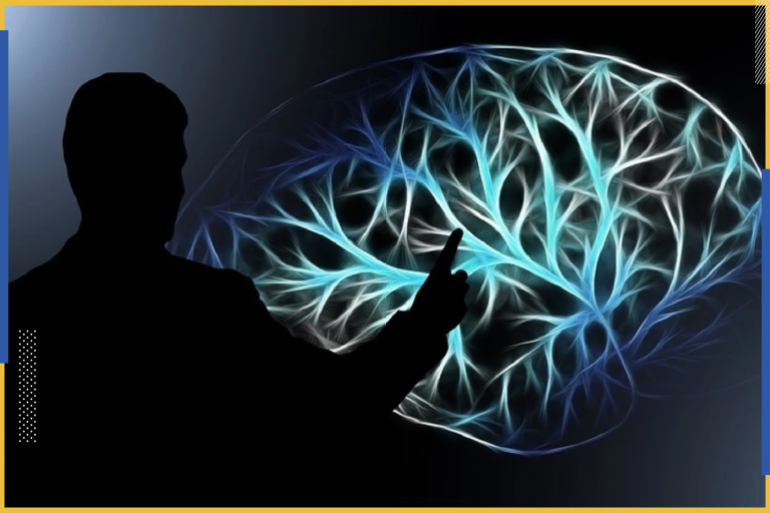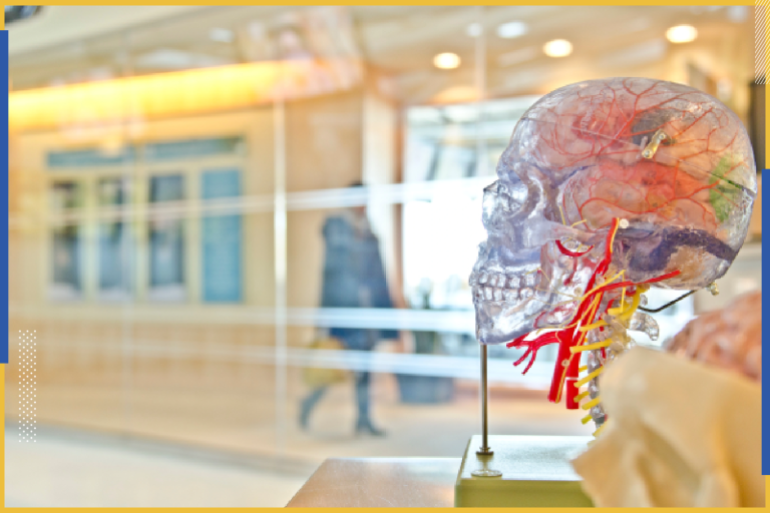The greatest miracle of creation...the eight wonders of the human brain

The human brain has always been a secret that has baffled scientists for a long time. This part of the body, which is located inside a fortified skull, is characterized by enormous capabilities that enable it to perform extraordinary mathematical tasks, and to create and understand in ways that have never been seen before in the known universe, and all of this using an amount of energy sufficient to glow a light bulb. 20 watt electric.
Man has been able to achieve major breakthroughs in understanding the human brain. In recent years, we have discovered that brain cells can regenerate and have identified what happens in the brain when we start speaking before knowing what we want to say. However, the more we learn, the more we realize that there is a lot we don't know. In these lines, we will try to explore together the biggest puzzling questions about the brain to reveal the mechanisms and secrets of this strange, precisely made mass.
?What makes our brains special
The human brain, as we like to say, has enormous capabilities. Other animals can use tools or exit mazes, but can they invent computers or write poems like humans do? However, despite our extraordinary mental prowess, it is not easy to explain what makes the human brain so special. The weight of a human brain is about 1.5 kg, which is equivalent to about a third of the weight of an elephant’s brain and one-fifth of the weight of a sperm whale’s brain.
However, if we take body size into account, our brains are extraordinarily large, with a human brain being between seven and eight times what would be expected for mammals our size. But this primitive analogy is not enough to explain our intelligence. For example, the capuchin monkey has a higher brain-to-body size ratio than the gorilla, yet gorillas are considered more intelligent.

Clearly, size is not everything. Rather, the most important measure may be the number of neurons, which are the processing units in the brain. Brazilian neurologist Susana Herculano-Hozel from Vanderbilt University, Tennessee, who developed new methods for calculating the number of nerve cells, stated that humans have about 86 billion nerve cells.
In fact, primate brains contain many more neurons than the brains of other mammals of similar size. Since humans have the largest brain size of all primates, they also have the largest number of neurons, perhaps of all other animals. This was likely achieved through the invention of cooking, which releases more calories from food to nourish this organ, which is considered the most energy-consuming organ in the human body.
However, the most important factor may not be just the number of neurons, but also where they are located. Herculano-Hozel suggests that our remarkable abilities likely stem from having a greater number of neurons in the cerebral cortex — the superficial layer of the brain made up of grooves and gyri that help greatly increase the area of the cortex — than in other animals. This structural structure allows us to develop more complex behaviors rather than simply responding to stimuli. So, Herculano-Hozel says, “If you have a cerebral cortex, you are no longer a slave to what is happening around you. You have flexibility that enables you to choose to do other things.”
Furthermore, her team recently discovered that across all warm-blooded animals, the number of neurons in the cerebral cortex correlates with longevity. Herculano-Hozel believes this is also a major factor in our cognitive superiority, as humans take years to reach maturity. She explains this by saying, “A person takes a very long time to build the brain, and during that time, he acquires and absorbs information from the world around him.” This may not be attributed only to neurons alone. There is also another type of cell called astrocyte that plays an important role in the development of human intelligence. But the enormous computing power provided by the cerebral cortex's 16 billion neurons is likely to be the decisive factor contributing to our cognitive dominance.

?What is awareness
The conscious mind can be visualized as a stove. So when a person is deeply asleep, the flame of consciousness recedes to a low but constant level. While in the rapid eye movement sleep stage, given that dreams occur in this particular stage, the intensity of the flame escalates and burns brightly but irregularly. In the state of coma, the flame appears like a glowing embers.
In other words, consciousness exists in a number of states. One explanation for this is that mindfulness emerges when many parts of the brain broadcast information to a network of neurons known as the “global action area.” When this transmission does not occur, the sensation remains in an unconscious state. When this transmission is incomplete, you experience different levels of consciousness, such as when you dream or receive a blow to the head.
By studying these cases, we should one day be able to identify the brain mechanisms that give rise to consciousness. Why, then, are attempts to explain consciousness described as a “difficult dilemma”? How can a group of neurons weighing 1 kg or so evoke the series of thoughts and feelings that constitute our mental experience? One reason is that philosophers focus on explaining how experiences are perceived. The term “sensible qualia” coined by philosophers describes the qualities of our experiences, the state in which the qualities of objects are perceived from a subjective perspective in a state of consciousness, such as the red color of a strawberry or the taste of wine. However, trying to come up with explanations for perceived qualities causes endless confusion among neuroscientists.
One solution to this dilemma is to simply ignore it. “The term ‘sensible qualia’ is a term of art introduced by philosophers who want to make questions about the nature of consciousness subject only to vague explanations not based on biological evidence,” says Patricia Churchland, a professor of philosophy at the University of California, San Diego. After all, we don't usually talk about our physical qualities, but rather things like feeling tired, needing to eat or even falling in love, all of which are feelings that have a direct biological origin and are not mysterious.

The brain only presents to our awareness the things that occupy a significant portion of our attention, and it does so in a way that we can understand
Philosopher Daniel Dennett of Tufts University, Massachusetts, has explained that most people may not be aware of their perceived qualia until philosophers push them to think about it. What's worse is that Dennett not only believes that there is no difficult dilemma, but that consciousness itself is a kind of illusion. He explained this by saying: "It takes some objective persuasion and flattery to make people 'notice' their perceived qualities, and when they believe they have actually noticed them, they fall into another illusion."
The illusion, according to Dennett, is that each of us believes we are privileged to have access to some remarkable property of our mental states, which we think we are intimately familiar with and regard as acquired experience. But the brain only presents to our awareness the things that occupy a large portion of our attention, and it does so in a way that we can understand. For example, this is why we see things in certain colors. While the real world may not look that way, our visual system effectively assigns a color code to the world around us, in order to simplify it.
Delusions of the mind
Dennett claims that just as color can be considered an illusion created by the brain to adapt to the world, so can consciousness. He explained this by saying, “Consciousness is a means of ‘user illusion’ that arose as a result of evolution to facilitate the life of the brain that must lead the body through a risky life.”
Smartphone designers call the phone's screen an "illusion or deception of the user." The screen is considered the interface of the computer located underneath it, but the icons that appear on it, such as the envelope icon that symbolizes the messaging application, are symbolic indicators that do not have any relationship to the actual hardware components and software responsible for the operation of the phone’s messaging system. If we think of our brains as smartphones, then consciousness represents the screen, which acts as an interface for our brains. But that metaphor is not accurate, Churchland says. For example, when we feel dizzy or determine where a sound is coming from, this is the result of physical processes occurring in the brain. Perhaps awareness is like a smartphone screen that displays different applications according to how much power is left in the battery or how much the phone vibrates. In other words, it can be said that consciousness is a partial illusion, representing an image whose parts the brain brings together as a result of all the inputs it receives and the completion of the transmission of information from the parts of the brain to the network of neurons.
?Are smart people's brains different

The short answer to this question is yes. People vary in their intelligence, so how can we explain this difference if we do not attribute it to differences in brain structure or function? However, these differences in particular are the subject of in-depth research. The first thing to notice is that people with larger brains often actually have higher IQs, but there are more factors that control this than just size. To learn more about this, we need to look closely at the white matter and gray matter that make up our brain. Gray matter consists of the main bodies of nerve cells, while white matter consists mainly of axons that transmit electrical signals. Roger Kievit and colleagues from the Medical Research Council's Cognition and Brain Sciences Unit in Cambridge, UK, have discovered that the volume of gray matter in the frontal lobes is linked to fluid intelligence, which is the ability to think logically and solve new problems without prior knowledge, by recognizing patterns and relationships and using deduction. To solve problems. They also found that this was related to the amount of white matter connections between the two halves of the frontal part of the brain.
However, it does not depend only on the amount of tissue. One of the most surprising features of mammalian brains is the presence of deep grooves and convolutions of gray matter on their surface, giving them a walnut-like appearance. In addition, it helps greatly increase their surface area, bringing the cells closer together and allowing them to communicate faster. It is certain that the amount of these grooves is related to the speed of thinking and working memory, as more intelligent people have more convolutions in their brains.

However, we still do not know where intelligence resides in the brain. To explore this, we can draw on one of the most famous ideas about the location of intelligence, a theory known as the “frontotemporal integration theory.” This theory proposes that the biological basis of intelligence is a network linking different active brain areas. We can find evidence of these active areas in studies based on brain imaging. Researcher Ulrike Basten and her colleagues at Goethe University in Frankfurt, Germany, were able to identify a network linking 20 different regions in the frontal and temporal regions that are linked to intelligence, by studying how parts of the brain are activated while performing cognitive tasks. They found that the density of gray matter, or the strength of neural activity in these areas, indicates a high IQ.
It seems we're almost there, but this evidence means not only do smarter people have anatomically different brains, they also seem to have more efficiently functioning brains. “Even if the brain had the right exoskeleton to achieve high levels of performance, it wouldn't matter without an internal computer to regulate how to save energy and when to allocate resources at each moment,” explains Emiliano Santarnicki of Harvard Medical School. Santarnicki's study suggests that magnetic stimulation may increase the efficiency of brain processing, and also underscores the importance of flexibility, or the ability to change. Perhaps some people have brains that are naturally more flexible and better able to learn.
This is not to mention the genetic aspect. Although we know that hundreds of genes contribute to intelligence, it may take a long time to discover the nuances of their influence. But even then it will not be easy to find the center responsible for intelligence, which is considered the richest human trait found in the brain, which in turn is the most complex and mysterious thing known in the universe.
?What happens when we think

Think about the thought process, and it won't take long for your mind to become confused. Ideas usually come naturally to us, but determining exactly what those ideas are is a more complex process. Previously, thoughts were considered immaterial entities separate from the biological matter of the brain. Now, we know that all our thoughts, whether simple or abstract, are the result of electrical signals traveling in the brain network consisting of 86 billion neurons. Researcher Ethan Solomon from the University of Pennsylvania tried to simplify the concept of thinking by saying: “What the thinking process represents to me is simply the process of converting inputs into results by the brain.”
But if you ask 100 neuroscientists to define the process of thinking, you'll get 100 different answers, says researcher Avgustus Shestig of the University of California, Berkeley. She believes that “thinking is a comprehensive term that includes many different cognitive processes.” Some ideas take the form of images, others consist of words, and many of them are born at the subconscious level, without us even realizing it.
The latest neurological studies have given us the opportunity to capture the electrical signals that underlie thinking. It showed that even simple, primitive thoughts involve a huge amount of activity, as different brain regions are stimulated and send information to other regions, and some “central” regions direct the flow of that information.

The more difficult the memory process, the more active the prefrontal cortex becomes, and the longer the response lasts, because of the time it takes for that region to activate other brain areas such as the networks in which memories are stored.
Last year, for example, Shestig and her colleagues were able to record the journey individual thoughts take in the brain by measuring certain electrical signals when study subjects were asked to remember and say a word. The first areas to show electrical activity were the visual and auditory cortex, which receives signals from the eyes and ears. Then, the brain's command center - the prefrontal cortex - began to activate.
The more difficult it is to remember, the more active the prefrontal cortex becomes, and the longer the response lasts, because of the time it takes for that region to activate other brain areas such as the networks in which memories are stored. Finally, the motor cortex is activated to generate a spoken response. Surprisingly, this happens before the prefrontal cortex decides to respond. “That's why we sometimes start talking before we know what we want to say,” says Shestig.
Thus, the prefrontal cortex helps coordinate thought processes, but the signals involved also need to be coordinated. This is the function of brain waves, which are waves of neural activity that oscillate at different frequencies across the brain. Solomon's research has revealed that during a memory test, low-frequency theta waves in the various brain regions involved become coordinated, and this synchronization may allow information to be communicated between regions.
Our new ability to monitor individual thoughts means that mind readers are no longer just a fantasy. Earlier this year, electrodes attached to the brain were used to translate brain waves into words spoken by a computer. Such techniques may help people with locked-in syndrome, a condition in which the patient is awake and conscious but unable to communicate verbally with others because all voluntary muscles except the eyes are completely paralyzed. All thanks to the power of thinking.
?Are you a right- or left-brained person

You may have previously thought that you were right- or left-brained, meaning that you were predominantly rational and logical, or creative and energetic. Although this concept is attractive, it is also a myth. It's easy to see why this idea came about. In the 1960s, we discovered that some functions occur only on one side of the brain. Most people process language in the left half of the brain, while the right half of the brain processes emotions. It was soon said that the left hemisphere controlled tasks involving logic, language, and analytical thinking. While the right side of the brain is responsible for controlling emotions, musical taste, and the tendency to act impulsively. Since then, the famous saying has emerged that your personality can be determined by which side of your brain dominates your actions.
However, the truth is a little different. For example, although the left hemisphere of the brain is responsible for producing words that may be complex, the right hemisphere allows you to understand the emotional and metaphorical content of those words, as it gives you some linguistic skills. On the other hand, creative thinking activates a vast network of cells that does not stimulate either hemisphere of the brain.
Furthermore, there is no evidence that one side of the brain is more active than the other. Jeffrey Anderson from the University of Utah conducted scans that included the brains of more than a thousand people while they were performing various tasks, and the results revealed that none of them showed dominance of one side of the brain at the expense of the other.

We all use all parts of our brains all the time, but there are those who rely more on the upper or lower brain systems, and this consequently affects our behavior.
From top to bottom
There are other prevailing ideas about how the brain works. The “cognitive styles theory” developed by Stephen Kosslyn of Harvard University holds that the way we think is determined by whether our brains are front or back (diagram page 37). It is worth noting that the upper parts of our brains are responsible for preparing and implementing plans and reconsidering them if they go wrong. The lower parts are mostly responsible for processing sensory input, classifying objects and facts, and giving them meaning.
Kosslyn says that we all use all parts of our brains all the time, but there are those who rely more on the upper or lower brain systems, and this consequently affects our behavior. A person whose brain is dominated by the higher cerebral systems will be more creative and more adventurous, but he will sometimes become inefficient because he does not update his plans based on current circumstances. In contrast, a person whose brain is dominated by lower cerebral systems thinks a lot about the details of his plans, but is less inclined to initiate complex projects and schemes.
However, Anderson posits that our personalities are likely shaped by the way different brain systems are connected and how rich the connections are between them. For example, people who are open to new experiences are often very moved (and goosebumps) when they observe a beautiful sunset. Neuroimaging of the brain shows that these people have many connections between the parts responsible for processing sensory information and the parts responsible for emotion or conscience.

Sometimes it feels like your brain has stopped working when you're resting. But that is not true. As long as you are alive, your neurons will continue to work actively
Anderson says we can take advantage of this information by employing it in deep learning and artificial intelligence mechanisms that can provide accurate predictions about a person's personality traits based on neuroimaging of the brain. He added: “It is not about whether one uses the left or right side of the brain more, but rather the subtle differences in the connections between all parts of the brain.”
?Does your brain stop working
Sometimes it feels like your brain has stopped working when you're resting. But that is not true. As long as you are alive, your neurons will continue to work actively. “Your brain processes a lot of things, even when you're apparently doing nothing at all,” says Deniz Vatensifer, a cognitive neuroscientist at Fudan University in China. It is in no way possible to imagine the possibility of the brain stopping. Constant readiness at all times was a matter of life and death for our ancestors. Perhaps most of us currently do not care about sudden leopard attacks from among the bushes, but we still have to remain alert so that we are not exposed to danger or miss opportunities, and this requires a mind that is always working.
In the 1990s, neuroscientists noticed that even though people lay still with their eyes closed during neuroimaging, their brains showed surprising levels of activity. The researchers quickly identified the parts of the brain that were most active during periods of rest, and called it the “Default Mode Network.” This network shows little activity when we are doing tasks that require our attention, but is very active when we are doing nothing at all, allowing our minds to wander.
Some evidence suggests that the default mode network is responsible for thinking about past experiences and planning for the future. In this sense, this state is necessary because daydreaming is one of the abilities that distinguishes us from other animals. But the Default Mode Network's tasks go far beyond that. Vattensifer and his colleagues demonstrated in 2017 that it is the reason why we are able to do routine things without paying attention, such as tying a shoelace or driving along a familiar road, that is, our “autopilot mode.”
Shutdown

The brain turns into a hive of activity during sleep as well. Once consciousness is lost, the brain begins working on all sorts of tasks such as expelling toxic particles (wastes), regulating hormone levels, and building dreams, which are believed to provide a safe environment for simulating new behaviors that will help one during one's waking life. The sleeping brain also archives some experiences for later recall.
Even when someone is in a vegetative state, unconscious and visibly unresponsive for a long time, their brain continues to function to a certain extent. For example, when people in this state are asked to imagine themselves playing tennis, blood flow increases in the parts of the brain responsible for motor skills, which means that the neurons in those areas are in a state of great activity. In one case, these parts were activated in a patient who was asked to respond to a set of yes or no questions.
Nerve cells do not completely stop working until they die. Even in that exceptional case, there is a final burst of activity produced by the human brain, as Jed Hartings and his colleagues at the University of Cincinnati in Ohio recently demonstrated for the first time in humanity. When the heart stops pumping blood to the brain, depriving it of oxygen, neurons rely on stored reserve energy to continue working for up to three minutes before producing another final burst of electrochemical energy, and only then does the brain stop working completely.

We often forget that the intestine is a sensory receptor, which detects nutrients, toxins, and pathogens entering the body, and relays this information to our brains.
?Does the intestine affect the brain
In some situations, we feel pain in our intestines, which prompts us to make decisions based on this feeling. This may be more real than we imagine. For example, the feeling of nausea is associated with harsh judgment of certain moral violations [it is a euphemism for disgust]. This is just one of the many ways in which the gut affects what goes on in our heads.
We often forget that the intestine is a sensory receptor, which detects nutrients, toxins, and pathogens entering the body, and relays this information to our brains. The intestine contains about 500 million neurons that coordinate the digestive process. The intestine is also home to about 2 kilograms of bacteria, which create our gut microbiome, which affects every organ in the body including the brain. A large body of studies in mice have also shown that changing gut bacteria can change behavior. This made the mice isolated and unsocial in some cases.
The importance of the microbiome increases in childhood in particular, when the brain is still developing. For example, mice that lack a type of bacteria called Bifidobacterium in their intestines during breastfeeding are poor at acquiring and learning new experiences. Evidence of this is increasing in humans as well. One imaging study concluded that consuming fermented milk containing different types of live bacteria had a significant impact on the brain activity of resting people and on their reactions to seeing faces displaying certain emotions. A study conducted this year in Belgium in which 1,054 people participated found that there are certain types of intestinal bacteria that are rarely found in people who suffer from depression.
There are also exciting indications that some neurological conditions, such as autism and Alzheimer's disease, may have their original origin in the intestines. In Parkinson's disease, synuclein fibers (or "synuclein fibres", a type of protein found in abundance in this disease and one of its distinguishing features) first appear in the intestines before spreading to the brain. We still don't know what causes it, but it may be an unknown microbe or toxin (protein biotoxin). In epilepsy, changes in the microbiome may explain why high-fat diets (such as keto) prevent seizures in some people.

Research into the relationship between the gut and the brain is still in its infancy, but it has sparked the idea of developing drugs that target the microbiome to improve our mental health, called psychobiotics. John Cryan of University College Cork in Ireland thinks this is an exciting prospect, but extensive work is still needed to figure out exactly which bacteria are beneficial for each condition and how to culture them in the gut.
How bacteria actually affect the brain is also still a mystery, but the picture is now clearer. The tens of trillions of bacteria in our intestines form a hive of metabolic activity, producing huge amounts of chemicals that our bodies can absorb. Current research is based on knowing which ones specifically reach the brain and affect it. There are some bacteria that feed on GABA, or gamma-aminobutyric acid, a chemical found in the brain that has an effect on depression.
It may be surprising that our brains are influenced by what's in our gut, but it's not so surprising if you consider that these microbes have always been with us, Cryan says. He added, "I consider them friends with social benefits because they actually influence the social brain during childhood and development. This is also a very important relationship and I think it was an evolutionary tool."
?What is the brain made of
A few years ago, scientists took cells from the human brain and inoculated them into mice. After a year, those cells had doubled and the mice became smarter and learned more efficiently than mice with normal brains. This might not surprise you until you know that those brain cells weren't neurons. As the process of building brain cells continues, neurons have the lion's share. There are about 86 billion of these thin cells that carry electrical impulses in the brain, helping us control our bodies and continue thinking. However, there are many brain cells that are electrically inactive. These are glial cells whose number is at least the same as that of neurons. The brains of mice were inoculated with the astrocyte type of glial cells, which indicates their importance in learning processes, and this is not the first time that scientists have reached this result.

Astroglia care for the environment surrounding neurons, controlling levels of chemicals known as neurotransmitters, and also help repair damage.
These glial cells were once considered merely space-fillers, but today this has changed. “There is growing evidence to suggest that it is more than just a sticky substance,” says Anne Kwok, executive director of the British Neuroscience Society. “These cells are unknown soldiers inside the brain.” There are several types of these cells: some, for example, are small cells called microglia, which roam the brain devouring foreign substances to protect nerve cells.
Astroglia also care for the environment surrounding neurons, controlling levels of chemicals known as neurotransmitters, and also help repair damage. There is increasing evidence that these cells also have a role in the development of human intelligence. We know that young children start out with many connections between their neurons, and that those connections are gradually pruned to create fewer, stronger signaling pathways; Astroglial cells appear to have a role in this pruning process.
“Although neurons are still very important, there appears to be a role for glial cells in determining electrical gain in the brain system,” says Ed Line of the Allen Institute for Brain Science in Seattle. It's not just about cells; spaces also play a role. Deep in the brain there are small chambers called ventricles, which produce a fluid that bathes the brain cells. It produces 500 milliliters of cerebrospinal fluid every day, which keeps things running and stable by providing support and nutrients and flushing away waste.
There is no doubt that there is more to discover. Last year, researchers identified a new type of brain cell that they called “rosehip neurons,” because they resemble the shape of the rosehip fruit. They stated that it may only exist in the human brain. There are other secrets that may be revealed by Line's efforts to create a map of all types of brain cells, which is painstaking detective work that tracks the genes expressed by each individual cell. He recently began studying the neocortex of the cerebral cortex, which is the outer part of the human brain, which deals with higher processes and constitutes about 80% of the brain’s mass, and discovered 75 different types of cells in that cortex alone.
?What makes some brains more resistant to weakness and wilting

There is a shocking fact of life: as you get older, your cognitive abilities begin to decline. What is the reason why some people reach old age suffering only from “fleeting moments of dementia,” while others suffer from significant mental and intellectual decline?
The brain begins to shrink around age 40, with cells deteriorating most rapidly in the frontal lobe, striatal nucleus, and hippocampus. These are areas that play a role in shaping our most complex thoughts, movements, and memory. Your ability to resist the effects of this decline is likely related to your cognitive reserve. This is something like a mental buffer that allows the brain to withstand as much damage as possible before you start to notice changes in your cognitive abilities.
Cognitive reserve is not just about having more neurons than others, but also how well those neurons are connected to each other across different networks in the brain. This allows the brain to compensate when age-related deterioration or disease occurs, and helps redirect information so that the brain can continue to function as efficiently as possible. This is a bit like increasing processing power in a computer: many things can go wrong before you even notice they're slowing down.
The environment may also affect cognitive reserve. Higher levels of education provide one with one of the greatest degrees of increase in that reserve; While poor health conditions such as obesity and insulin resistance (IR) reduce it. Many genes also help us resist cognitive decline. Small genetic differences are linked to our susceptibility to Alzheimer's disease, but also to how the brain uses energy reserves and reacts to injuries and pathogens.
Mind exercise

There are ways to improve cognitive reserve. One of the best ways is to continue your education throughout your life
The shrinkage of the brain over time seems distressing; However, there is some good news. Although most brain cells arise and form soon after birth, our brains can generate certain types of neurons until the age of ninety and ten years of age. This ability may go some way to explaining why some people's brains manage to resist the ravages of aging.
There are other ways to improve cognitive reserve. One of the best ways is to continue your education throughout your life. However, there are other things that help in this, including playing a musical instrument, social interaction, getting plenty of sleep, and mastering more than one language. Despite this, do not rely on this and rely on it too much; The proverb “A sound mind in a sound body” has become true.
“If you're looking to maintain your mental health, you need training and exercise,” says Steve Harridge, director of the Center for Human and Applied Physiological Sciences at King's College London. Regular training produces significant improvements in memory, attention, processing speed, and executive functions such as planning and multitasking.
Don't leave it until it's too late. Richard Henson and his colleagues at the University of Cambridge have discovered that the things we do in midlife - outside of work and education - make a unique contribution to improving brain health as we age. However, the activities that retirees engage in at the end of their lives have less impact. “Midlife seems like a good time to intervene to get people involved in more activities – physical, intellectual/mental and social – that may have promising effects for them 20 or 30 years later,” Henson says.
———————————————————————–
This article is translated from New Scientist and does not necessarily represent the Meydan website.

